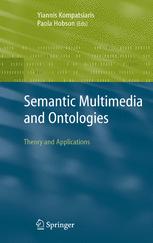

Most ebook files are in PDF format, so you can easily read them using various software such as Foxit Reader or directly on the Google Chrome browser.
Some ebook files are released by publishers in other formats such as .awz, .mobi, .epub, .fb2, etc. You may need to install specific software to read these formats on mobile/PC, such as Calibre.
Please read the tutorial at this link: https://ebookbell.com/faq
We offer FREE conversion to the popular formats you request; however, this may take some time. Therefore, right after payment, please email us, and we will try to provide the service as quickly as possible.
For some exceptional file formats or broken links (if any), please refrain from opening any disputes. Instead, email us first, and we will try to assist within a maximum of 6 hours.
EbookBell Team

5.0
20 reviewsTaking a step-by-step approach, and drawing on the expertise of key researchers in the multimedia and knowledge domains, this book guides the reader through the fundamental enabling technologies of ontologies (for example MPEG-7 and OWL), analysis, context and reasoning, to commercially interesting applications including personalised content summarisation, 3D modelling and management of scientific data.
All relevant topics are covered; including ontologies for low level multimedia feature representation, higher level multimedia systems representations, application of multimedia ontologies for visual analysis, and usage of multimedia and knowledge technologies for applications. The authors aggregate relevant disciplines including knowledge representation, multidimensional signal processing, logic, artificial intelligence and machine learning to provide a coherent picture of the different strands of research that need to be combined in order to achieve semantic multimedia applications.
"Semantic Multimedia and Technologies" will serve as an excellent reference and guide to exploring how knowledge technologies can be exploited in the creation of new multimedia applications, and how these technologies can provide new contexts for the successful use of knowledge technologies.